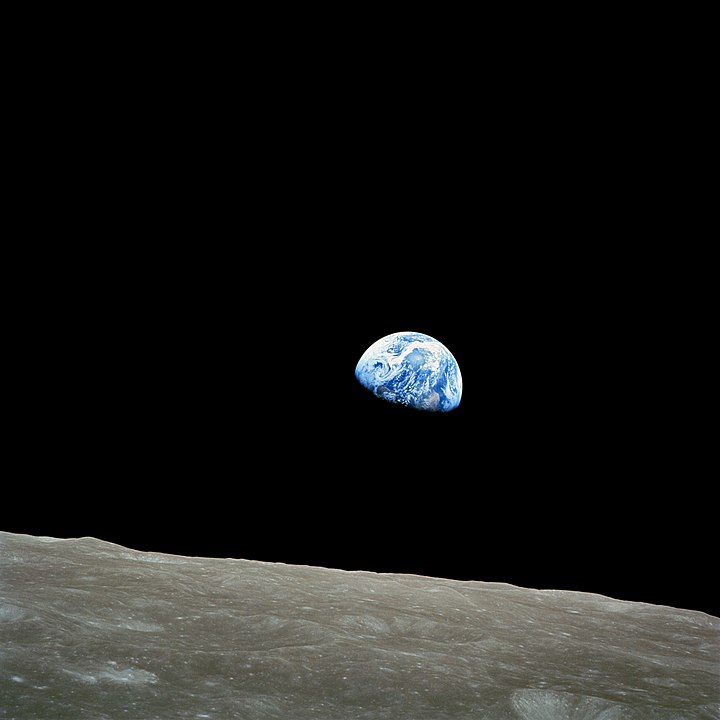 The story of Earth Days past and present can be told through photos - the right ones at the right times can change everything.
The story of Earth Days past and present can be told through photos - the right ones at the right times can change everything.
The first photo that led to Earth Day was the Earthrise photo taken on December 24, 1968 by Apollo 8 astronaut Bill Anders. It entered the world’s collective conscious with the understanding that our planet is unique, fragile and in need of saving. Nature photographer Galen Rowell called it "the most influential environmental photograph ever taken." Many say that photo along with the Santa Barbara oil spill and the Cuyahoga River fire galvanized the public to take action.
Fast forward two years later. It's January 29, 1970, about a year after the Santa Barbara Oil Spill, and Los Angeles Times Photographer Bruce Cox snaps a photo of a sit-in of 500 mostly young people blocking oil trucks at Santa Barbara’s Stearns Wharf. It's 84 days before the first national Earth Day, and protesters are holding a 14-hour sit-in while police with shields and batons ready to deploy tear gas look on. You can see the Getty Images of the sit-in and the spill by clicking on the link to the National Geographic story here. 
The Santa Barbara sit-in and first Earth Day (originally envisioned by Wisconsin Senator Gaylord Nelson as a national teach-in) was a protest, not a celebration. It was a backlash to an ecological and social tipping point reached by decades of government-supported industrial scale pollution. Historic AP photos of the First Earth Day can be found here.
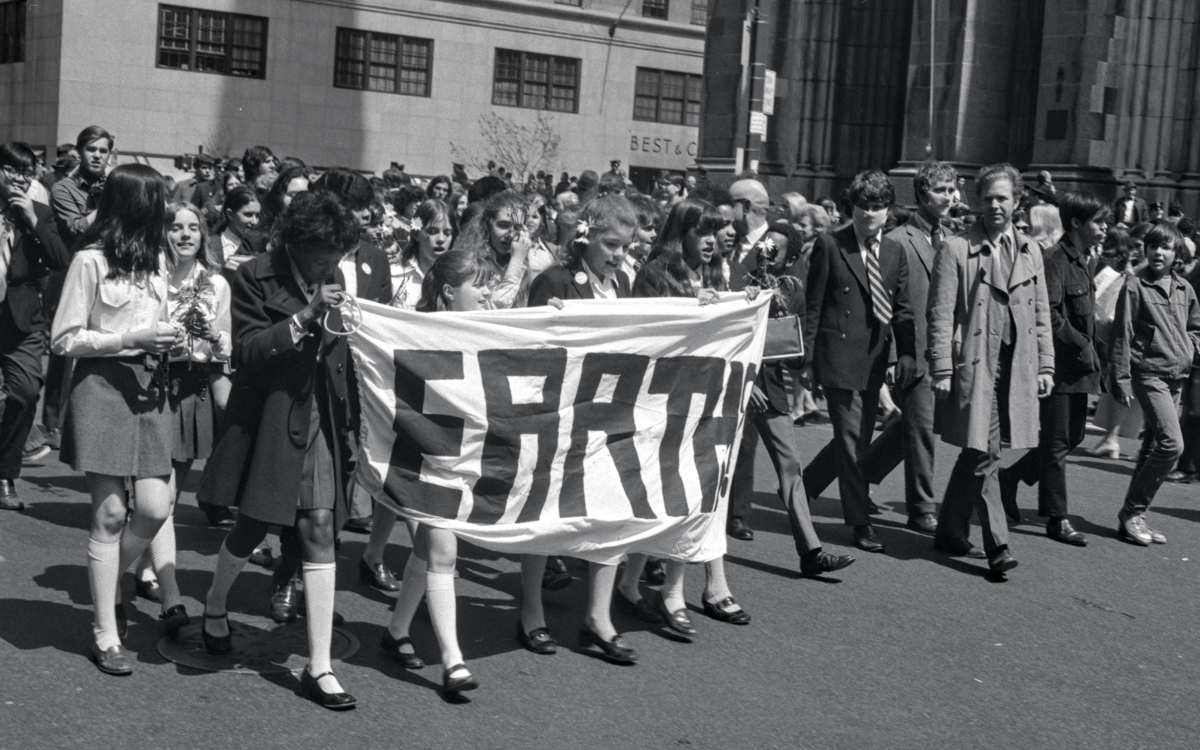
Coronavirus has made the 50th Anniversary of Earth Day feel like we’re at a similar tipping point even though we experienced it on-line. Our society is scared, isolated and filled with economic and social tension. Many see our Coronavirus experience as a window into the future, as a preview of a climate catastrophe or a springboard to a clean energy economy.
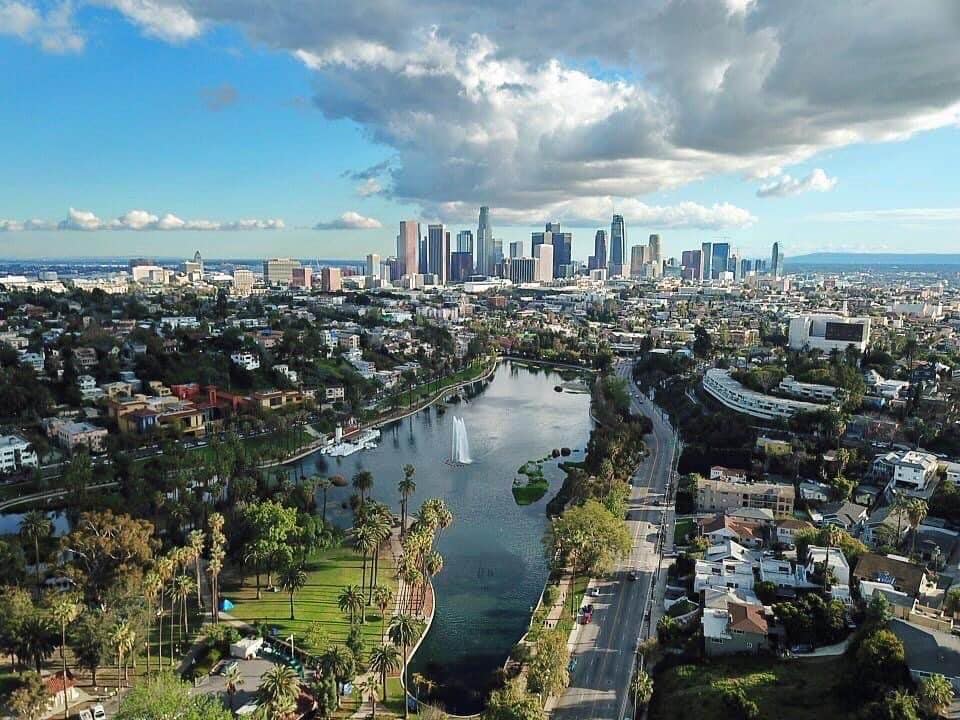 Fast forward to now. We see aerial photos of Los Angeles and offshore oil tankers during Coronavirus. We see real-life proof that we are causing the smog. Why can’t we have clean skies, a stable climate and a functional, just economy when the virus goes away? Part of the reason is oil and unfettered consumption. A Green New Deal is on everyone's mind.
Fast forward to now. We see aerial photos of Los Angeles and offshore oil tankers during Coronavirus. We see real-life proof that we are causing the smog. Why can’t we have clean skies, a stable climate and a functional, just economy when the virus goes away? Part of the reason is oil and unfettered consumption. A Green New Deal is on everyone's mind.
It's likely those ships will eventually come ashore, and the skies in LA will become smoggy again. But we’ll all remember those photos and want to return to clean skies. Those photos may inspire us just as Earthrise inspired another generation.
The 1970 Earth Day showed that change can happen quickly in response to photos and video of life-changing events. New laws were passed within a few years like the Safe Drinking Water Act, the Clean Air Act and the Clean Water Act. In the next few years, we too can pass laws and infuse massive amounts of money into electric vehicles and solar and wind and efficiency. Goleta streamlined electric vehicle charging last week, and that’s just the start of what’s possible.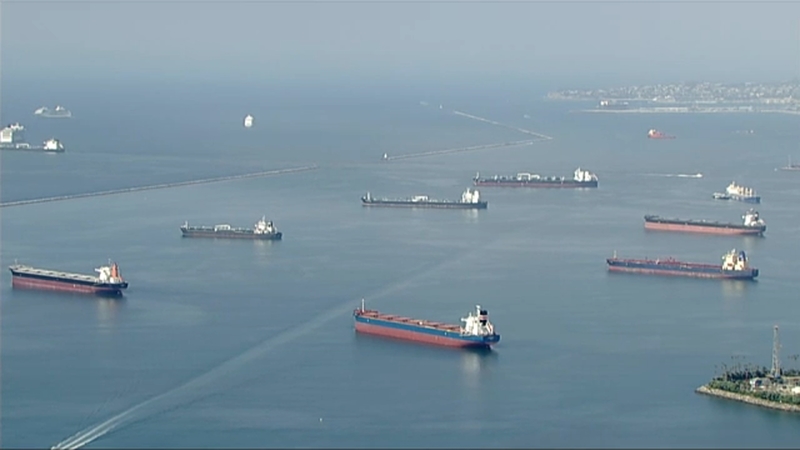 It’s going to take all of us.
It’s going to take all of us.
Denis Hayes, the organizer of the first national Earth Day, now 75 years old, spoke to the sit-in protesters on Stearns Wharf when he was 25. Hayes told Pacific Standard: “It was probably the first really giant crowd I had seen that felt passionately, I mean really passionately, about environmental issues.”
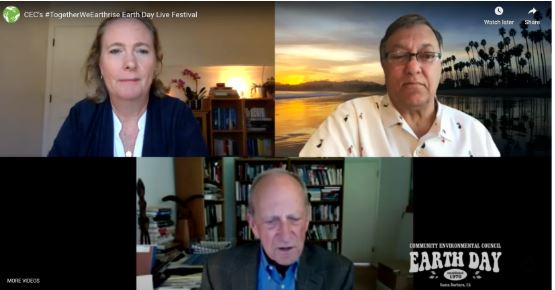
And there was Hayes again, last week, speaking to media and going on live webcasts, including one with Community Environmental Council, from his home in Seattle. He was disturbed that Coronavirus had cancelled a giant Earth Day Network event on the National Mall in Washington and events around the country, but added: “Earth Day in 2020 will be Election Day.” And nothing else could be truer.
The Sierra Club in Santa Barbara and Ventura Counties is working hard to build a better world this 50th Anniversary year, and we need volunteers like you to join us: together we will stop onshore and offshore oil expansion, build a sustainable, just clean energy economy powered by the sun and wind, geothermal and small hydropower. We will protect wildlands and wildlife from the Trump Administration. Now is the time and we need you! Click here to volunteer. Click here to donate.
-- Jonathan Ullman, Sierra Club Los Padres Chapter Director